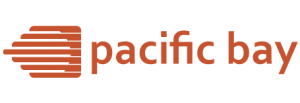Click-Worthy Thumbnails and Titles: The YouTube Formula for More Views
Getting someone to click on a YouTube video starts before they even press play. The first thing people notice is the thumbnail and title. If those don’t grab attention right away, the video gets ignored, no matter how good the content is.
Think of YouTube like a giant street filled with billboards. If yours doesn’t stand out, no one stops to look. The right combination of colors, expressions, fonts, and words can make the difference between a video that gets buried and one that racks up thousands—or even millions—of views.
Thumbnails That Get Attention
A thumbnail isn’t just a random freeze-frame from a video. It needs to be eye-catching, clear, and make people curious. The best thumbnails are simple but powerful. They don’t overcrowd the space with too many details but instead focus on one strong visual element that makes someone stop scrolling.
-
Faces Work Best: People are naturally drawn to faces. If the video has a person in it, a clear, expressive face can boost clicks. Big emotions—shock, excitement, curiosity—make people wonder what’s happening in the video.
-
Bold Colors and Contrast: Thumbnails should pop off the screen. Bright colors like red, yellow, and blue tend to grab attention. Using contrast—dark backgrounds with light text or vice versa—makes the image stand out.
-
Text That’s Short and Bold: If adding text, it should be big, clear, and easy to read at a glance. Words like “Secret,” “Truth,” or “You Won’t Believe” build curiosity. Keep it short—no one wants to read a sentence in a thumbnail.
-
Keep It Clean: A messy thumbnail confuses people. Too many images, tiny text, or low-quality graphics make it hard to understand. A clean, simple design works best.
Titles That Spark Curiosity
A title is just as important as a thumbnail. It needs to make someone think, “I have to know more.” A great title balances mystery and clarity—it should hint at what’s inside the video but leave out just enough to make people curious.
-
Use Numbers and Lists: People love lists because they set expectations. “5 Secrets to Growing on YouTube” or “10 Mistakes Every Beginner Makes” tell viewers exactly what they’ll get, which makes clicking more likely.
-
Ask a Question: Questions naturally trigger curiosity. Titles like “Is This the Best Camera for You?” or “What Happens If You Do This for 30 Days?” make people want to find out the answer.
-
Create a Sense of Urgency: Words like “Now,” “Before It’s Too Late,” or “You Need to See This” can push someone to click before moving on.
-
Avoid Clickbait That Disappoints: There’s a fine line between a strong hook and misleading clickbait. If the video doesn’t deliver what the title promises, viewers feel tricked and might never come back. The goal is to excite people, not fool them.
A Shortcut to More Clicks
While making better thumbnails and titles helps a video perform, it’s tough to get traction if no one sees it in the first place. That’s why some YouTubers choose to buy views on YouTube to boost their early momentum. A video with more views appears more trustworthy and attractive to new viewers. When people see that others are watching, they’re more likely to click too.
This isn’t about faking success—it’s about getting past the challenge of starting from zero. Many platforms offer real views from actual people, which helps videos rank better in search results and suggested feeds. Combining this with a strong thumbnail and title can create a snowball effect, bringing in even more organic traffic.
Small Changes, Big Results
Improving thumbnails and titles doesn’t require expensive equipment or complicated editing. Even small tweaks can lead to a major increase in views. Testing different styles, analyzing what works best, and adjusting over time can take a channel to the next level. The first impression matters, and those who get it right have a much better chance of standing out from the crowd.


